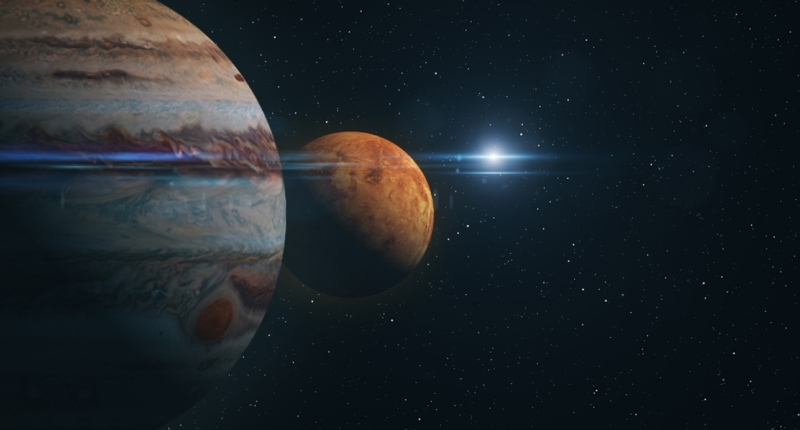Night sky enthusiasts can look forward to a stunning celestial event in late March, when five planets align in a planetary parade or alignment visible to the naked eye. This rare display includes Mercury, Venus, Mars, Jupiter, and Uranus and occurs every few years. To catch the best glimpse of this planetary alignment, head to a place with a clear view of the western horizon just after sunset. Additionally, fascinating celestial phenomena such as the “ring of fire” eclipse on October 14 and the total solar eclipse in April 2024 are upcoming events to watch for.
Night sky enthusiasts will be treated to a rare and visually spectacular event in late March, when five planets align below the moon in a display called a planetary parade or alignment. Mercury, Venus, Mars, Jupiter, and Uranus will all be visible, and the best view will be on Tuesday evening just after sunset. The display will continue to be visible over the next few weeks, with much of it visible to the naked eye, even in urban areas with significant light pollution.

Astronomy experts suggest heading out to a place with a clear view of the western horizon just after sunset, when streaks of the colorful sunset still remain and the sky has turned dark blue but not yet black. For those living far to the north, looking slightly southwest is recommended, while those in the Southern Hemisphere should gaze northwest.
Venus, often referred to as the “evening star,” will be the easiest planet to spot because it’s the brightest object in the night sky aside from the moon. Uranus will be close to Venus but may require binoculars or a telescope to be visible unless the viewer is in a prime location with no light pollution.
Jupiter and Mercury will be hovering just above the horizon, with Mercury being difficult to catch without special equipment due to the sun’s glare. Both planets will be visible for about 20 to 30 minutes after sunset. Mars will top off the planetary parade, sitting in a straight line above Jupiter, Mercury, Venus, Uranus, and the moon, and will be easy to spot due to its signature orange tint.
The entire alignment will cover about 70 degrees of the sky and will appear “kind of like pearls on a necklace” across the night sky, according to Cameron Hummels, a computational astrophysicist at the California Institute of Technology. Measuring degrees in the sky can be done using your thumb or closed fist, extended away from your body. A fist at arm’s length covers about 10 degrees, while a thumb covers about 1 degree.
Although this type of planetary alignment occurs every few years, it is rare to catch planets all together in an even smaller patch of the sky. The display is visible across the Northern and Southern Hemispheres and is an opportunity for stargazers to witness a beautiful celestial event.
A planetary alignment of five celestial bodies, including Mercury, Venus, Mars, Jupiter, and Uranus, will decorate the night sky in a stunning display called a planetary parade or alignment. This alignment occurs every few years and can be visible to the naked eye, even in urban areas with significant light pollution. Onlookers can catch the best glimpse on Tuesday evening just after sunset. Fascinating celestial phenomena such as the “ring of fire” eclipse on October 14 and the total solar eclipse in April 2024 are also upcoming events to watch for.
Don’t miss interesting posts on Famousbio










